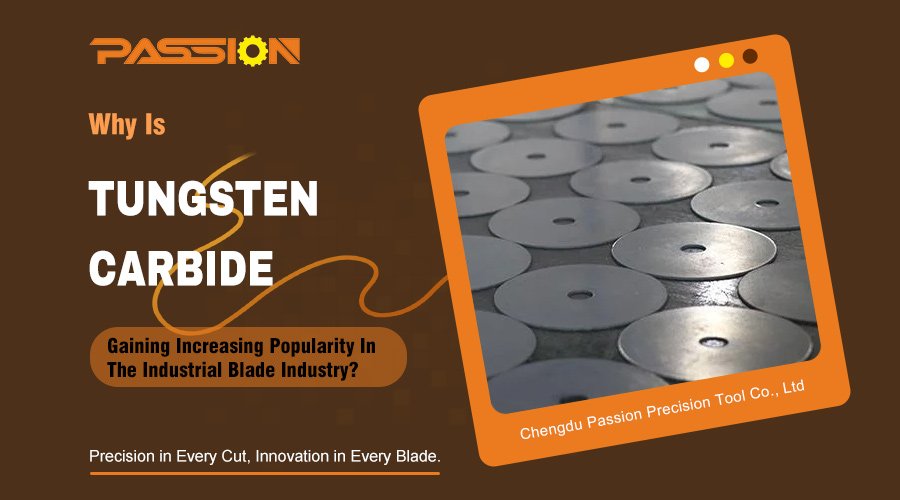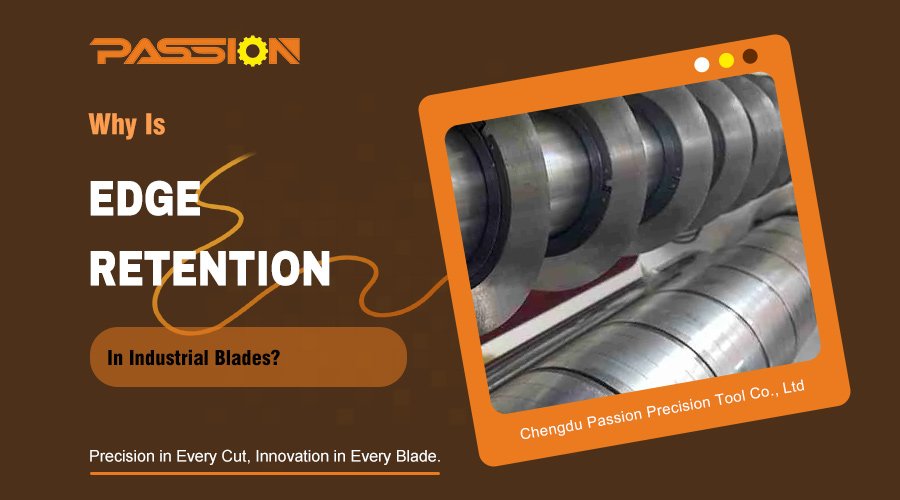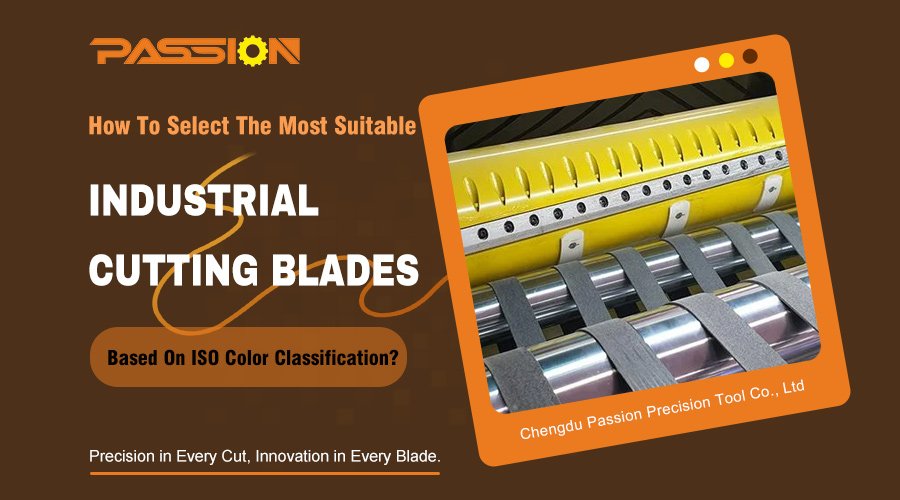In the field of industrial blade manufacturing, material properties and manufacturing process together determine the service life and cutting performance of the blade. Especially in the high strength, high wear, high temperature and other harsh environments such as the work of the blade, only rely on the overall material has been difficult to take into account the wear resistance, toughness and economy. Therefore, inlay welding process has gradually become an indispensable technical means in the manufacturing of industrial blades.
The core idea of this process is: will have high hardness, high wear resistance or special properties of the blade material, through a specific welding method firmly fixed in the knife body, thus forming a “knife body bearing, blade cutting” structure mode. This not only reduces manufacturing costs, but also provides the blade with greater durability and targeted performance.
In the past two decades, the inlay welding process has undergone equipment upgrades, solder optimization, process parameter refinement and other aspects of evolution, has been able to meet the needs of a variety of industrial scenarios from packaging slitting knife to metallurgical shear knife. In this article, we will systematically explain the process principle, common methods, material selection, equipment control, quality inspection and typical application areas to provide reference for engineers and purchasers in the industry.
What Is Inlay Welding?
Inlay welding is a process that utilizes welding technology to permanently bond materials with different properties. In industrial blade manufacturing, this usually means that a hard edge material is inlaid into a high toughness blade substrate, where a strong bond is achieved by the wetting and metallurgical action of the welding material at high temperatures.
Core Components:
Body Material: Medium to high carbon steels such as 65Mn, T10, Cr12MoV, or alloy steels with higher toughness are usually used to withstand the mechanical loads and impacts of cutting.
Cutting Edge Material: Commonly used YG8, YG6 carbide, ceramics, PCD (polycrystalline diamond), CBN (cubic boron nitride), etc., is responsible for the cutting material, the requirements of very high hardness and wear resistance.
Welding Filler Metal: Mostly silver-based, copper-based or nickel-based alloys, used to wet and fill the gap between the cutter body and edge at high temperature to form a high-strength bonding layer.
Advantage:
- Complementary properties: Combines hardness and toughness.
- Cost advantage: Reduces the amount of high-cost material used.
- Maintainability: Cutters can be rewelded or partially replaced.
- Wide range of applications: From high-speed slitting to heavy-duty shearing.
Example: The slitting knives in the paper industry generally use YG8 tungsten carbide as the cutting edge and 65Mn steel as the substrate, which are combined by inlay welding to maintain cutting accuracy and withstand the vibration and impact caused by high-speed rotation.
Principles Of Inlay Welding
The essence of inlaid welding is to use the wetting and capillary action of a low melting point welding material at elevated temperatures to securely join the edge material to the blade substrate without melting the base material.
Key Processes:
Heating
- The temperature is above the solid phase line of the welding material, but below the melting point of the base material.
- Common heating methods: flame heating, induction heating, vacuum furnace heating, laser heating, etc.
Wetting
Welding material in the flux or protective atmosphere to break the surface oxides, and the surface of the base material to form a good wetting, wetting angle is generally required <30 °.
Gap Filling
Capillary action makes the molten welding material automatically flow into the welding gap of 0.05-0.2mm, filling uniformly without porosity.
Metallurgical Bonding
The active elements in the welding material (such as silver, copper, nickel, manganese) diffuse with the atoms of the base material to form an intermetallic compound layer, and the bonding strength can reach more than 80% of the strength of the base material.
Cooling
- Control the cooling rate to prevent cracks caused by concentration of thermal stress.
- For tungsten carbide, slow cooling is recommended to avoid brittle cracking.
Key Indicators:
- Control welding temperature within ±10℃.
- The gap is uniform, avoid localized oversize or undersize.
- Cooling process should avoid rapid cooling, especially for tungsten carbide materials.
Common Inlay Welding Methods
Welding Filler Type Inlay Welding
- Operation process: First, pre-process the inlay groove, clean the surface oil stains and oxide layer, then place the brazing strip/brazing powder, and go through the steps of heating, heat preservation, and cooling.
- Parameter recommendations: Silver-based welding material temperature is generally 620-780 ℃, gap 0.05-0.15mm.
- Case: The round knife of the food cutting machine, using silver-based welding material filled with soldering, can ensure the sharpness while preventing the welding of brittle cracks.
Inductively Heated Soldering
- Characteristics: Fast heating speed (5-30 seconds), small heat-affected zone.
- Applicable welding material: Silver-based or copper-based, melting point 650-1100 ℃.
- Case data: A metal shear knife factory using high-frequency induction welding, welding efficiency increased by 40%, deformation control within 0.02mm.
Welding In The Furnace
- Environment: Vacuum or protective atmosphere (nitrogen, argon).
- Advantages: Dense weld without oxidation, suitable for batch production.
- Example: Metallurgical slitting machine blade in a vacuum furnace batch welding, a single furnace can be welded 120 pieces, the yield rate of 98%.
Sintering Welding
- Process characteristics: One time to complete the blade molding and edge combination.
- Material matching: Commonly used in the combination of tungsten carbide and steel base.
- Example: In the production of ceramic cutting knife, sintering welding reduces secondary processing and saves 25% of production cycle.
Laser/Electron Beam Assisted Welding
- Advantage: Concentrated energy, low heat input, suitable for high precision repair.
- Application: Localized edge repair of aerospace composite tools.
- Parameters: Laser power is generally between 300-1000W, welding speed 5-20mm/s.
Selection of Welding Material
In the inlay welding process, the selection of the welding material directly affects the strength, wear resistance and overall service life of the blade weld. Commonly used solder types mainly include silver-based welding material, copper-based welding material, nickel-based welding material and composite welding material. According to different working environments and performance requirements, they can be selected from the following aspects:
Silver-Based Welding Material
- Melting point range: About 600-800℃.
- Advantages: Good wettability, can fully fill the gap between the blade and the knife body, high toughness of the weld, not easy to produce brittle cracks.
- Disadvantages: Relatively high cost, and in the high-temperature environment, slightly lower strength, long time high temperature work may be softened.
- Typical applications: For food processing knives, textile knives and other high toughness requirements of the weld, while the processing temperature does not exceed 800 ℃ blade.
Copper-Based Welding Material
- Melting point range: About 900-1100℃.
- Advantages: Good high temperature resistance, low cost, suitable for metal processing knives with high temperature requirements.
- Disadvantages: Poorer wettability than silver-based welding material, need to strictly control the surface treatment and flux use, otherwise prone to weld cavities.
- Typical applications: Metal shear knives, high-speed shear knives, etc., excellent performance in high temperature, high intensity shear environment.
Nickel-Based Welding Material
- Melting point range: About 1000-1200℃.
- Advantages: Excellent high-temperature strength and corrosion resistance, welds remain stable in high-temperature environments.
- Disadvantages: Relatively brittle welds, difficult to process, requires precise temperature and time control.
- Typical applications: Aviation, aerospace and high-performance industrial cutting tools, especially blades for high-temperature or corrosive environments.
Composite Welding Materials
- Melting point range: Designed to cover 600-1200°C depending on the ratio.
- Advantages: Combines the combined properties of silver-, copper- or nickel-based welding materials, providing a balance between wear resistance, toughness and high-temperature strength.
- Disadvantages: Complex formulations, demanding soldering processes, requiring precise control of heating profiles and cooling rates.
- Typical applications: High-performance knives, such as metal slitter knives, high-speed paper cutters, and composite cutting knives, in scenarios where both high toughness and high-temperature resistance are required.
Summary Of Material Selection Principles:
- Select welding material with appropriate melting point according to the working environment temperature;
- Selection of welding materials that buffer thermal stresses based on the metallurgical compatibility of the cutting edge material with the base material;
- Selecting cost-effective materials by considering the cost of use, productivity and maintenance feasibility;
- For special needs, such as corrosion resistance, abrasion resistance or food-grade applications, silver-based or composite welding consumables can be prioritized.
Equipment And Process Parameter Control
The quality of inlaid welding not only depends on the material selection, but also affected by the performance of equipment and process parameters. In the actual factory production, reasonable control of each link is the key to ensure the performance of the blade.
Heating Equipment Selection
- High-frequency induction heating machine: Suitable for localized welding or small batch production, fast heating speed, can reach the welding temperature within 5-30 seconds, small heat-affected zone.
- Vacuum welding furnace: Suitable for mass production and high-precision blades, uniform temperature, can weld dozens to hundreds of tools at the same time, reduce oxidation and porosity formation.
- Protective atmosphere furnace: Using argon or nitrogen to protect the welding area, prevent oxidation of the weld at high temperatures, suitable for high-performance tools.
- Laser/electron beam assisted welding equipment: Suitable for high-precision repair or local inlay, concentrated heat input, tiny welding area, but the equipment cost is higher.
Heating Temperature And Time Control
- Silver-based welding material: the factory practice temperature is generally 640-780 ℃, holding time of 5-15 minutes, to ensure that the solder fully flow and wetting interface.
- Copper-based welding material: heating temperature at 900-1100 ℃, holding time 10-20 minutes, adjusted according to the thickness of the blade and the gap between the weld.
- Nickel-based welding material: temperature control at 1000-1200 ℃, holding 15-30 minutes, high strength of the weld, but sensitive to temperature fluctuations.
- For thin-edged blades or highly heat-sensitive materials, the factory will use zoned heating or slow temperature rise to avoid localized overheating leading to edge cracking.
Gap And Welding Material Thickness Control
- Welding gap is usually controlled at 0.05-0.2mm, to ensure that the capillary action to fully fill the weld, while avoiding too large a gap caused by the solder hole.
- Welding material thickness is generally 0.05-0.15mm, too thick will produce weld bulge, too thin may not be able to form a stable bond.
Pressure And Clamping
- For sintered welding or large blades, a light pressure of 0.05-0.2MPa is usually applied during the high temperature holding phase to ensure that the blade is in close contact with the body.
- For small blades, a mechanical fixture or magnetic clamping device is usually used to fix the position and prevent the edge from shifting during the welding process.
Cooling Control
- The cooling rate has a great influence on the quality of the weld. In factory practice, carbide blades are usually furnace-cooled or slow-cooled to avoid thermal cracking.
- Steel-based blades can be cooled using natural air cooling, but rapid and sudden cooling needs to be avoided, especially on unevenly thick and thin blades, which are prone to stress concentrations and microcracks.
Experience With Process Optimization
- For high production line batch production, the conventional practice is to carry out a small batch of test welding, record the welding temperature, holding time and cooling rate, and then adjusted to the batch standard.
- In actual production, it is also necessary to combine the blade material, edge shape, weld area and blade thickness to comprehensively adjust the process parameters to ensure that the weld is stable and the weld distortion is minimized.
Quality Inspection And Defect Analysis
Blades after inlaid welding need to undergo rigorous quality inspection to ensure that the welds are strong and uniform. Common inspection methods include:
- Appearance inspection: Observe whether the weld seam is continuous and smooth, and whether there are any defects such as porosity and slag entrapment.
- Dimensional measurement: Confirm that the position and angle of the cutting edge meet the design requirements.
- Non-destructive testing (NDT): Such as ultrasonic flaw detection, X-ray inspection, etc., to identify internal porosity and cracks.
- Microstructure analysis: Observe the metallurgical organization of the weld to determine the quality of metallurgical bonding.
- Mechanical properties testing: Including shear strength, impact toughness, etc.
The common causes of welding defects include insufficient solder, improper temperature control, and contamination of the bonding surface. For different defects, they can be solved by optimizing the amount of solder, adjusting the heating curve or improving the surface pretreatment.
Typical Application Areas
Inlaid weldable blades are widely used in several industrial areas due to their high hardness, toughness and partially replaceable characteristics. The following are the main typical applications and factory practices:
Slitter Blades
- Application industry: Paper, plastic film, metal foil, composite materials and other high-speed slitting production line.
- Blade structure: YG6 or YG8 tungsten carbide is often used as the edge, 65Mn or Cr12MoV steel as the base material of the blade, and silver or copper-based welding material is used for inlay welding.
- Factory practice: In the high-speed slitting production line, the rotational speed per minute can reach 800-1200 RPM, inlaid blade life is usually 3-5 times that of the overall steel blade.
- Performance advantage: Welded blades maintain sharp cuts while providing excellent vibration resistance, which reduces the frequency of blade changes and increases productivity.
- Easy maintenance: Instead of replacing the entire blade, the inlay can be replaced when the blade wears out, reducing production costs.
Metal Shear Blades
- Application: Steel plate, aluminum plate, stainless steel, copper plate and other metal materials processing.
- Blade structure: The edge of the use of tungsten carbide or high-speed steel, the body of the knife with high toughness alloy steel. Welding is mostly copper-based or nickel-based welding material to withstand high temperature shear environment.
- Factory practice: In the steel plate shear, the blade thickness of up to 10-25mm, blade width 200-400mm. inlaid welding so that the blade in the continuous shear after 3000-5000 times still keep the edge intact, no obvious chipping or wear and tear loss effect.
- Performance advantages: Inlaid blades can withstand large shear force and impact load, while the hard edge to reduce wear and prolong the life of the blade, to ensure shear precision and edge quality.
Packaging Cutting Blades
- Application: High-speed processing of corrugated cartons, plastic films, composite laminates, etc.
- Blade structure: The edge is mostly carbide or PCD, the blade body is made of medium carbon steel or alloy steel, and the welding is made of silver-based or composite welding material to take into account the toughness and wear resistance.
- Factory practice: In the high-speed packaging slitting machine, the blade can rotate 600-1000 revolutions per minute, inlaid edge can be used continuously for 6-12 months without replacement, significantly reducing production downtime.
- Advantages: Wear-resistant, vibration-resistant cutting edges ensure smooth, burr-free cuts at high speeds, and the inlays can be changed for different materials, providing high flexibility.
Food Processing Blades
- Application: Meat, fish, dairy and pastry processing.
- Blade structure: The edge is often made of food-grade stainless steel or PCD, and the blade body is made of high toughness steel, inlaid by silver-based welding material.
- Factory practice: In continuous production lines, the blades are subjected to high-frequency cutting and cleaning and sanitizing cycles. Inlaid welded blades have excellent corrosion resistance and can be used for 12-18 months without compromising cut quality.
- Advantage: Welded blades combine sharpness with corrosion resistance, maintain a stable edge to ensure food cutting accuracy, and are easy to disassemble for cleaning and replacement.
Tongue & groove welded blades are mainly used in industry in the scenario of high hardness edge and toughness knife body. Through reasonable welding method and material selection, not only extends the service life of the blade, but also improves the production efficiency and product quality. Slitter knives, metal shear knives, packaging material processing knives and food processing knives are the four most typical application areas, and with the continuous optimization of the inlay process, its application range is still expanding.
Inlay welding is a key technology in the manufacture of industrial blades that balances performance, cost and maintainability. By combining high hardness and wear-resistant edge material with high toughness of the blade body, inlay welding realizes stable performance of the blade in high-intensity, continuous processing environment. The choice of different welding methods and welding materials enables factories to flexibly adjust the process parameters according to specific production needs, thus ensuring the quality of weld seams, prolonging service life and improving productivity.
In practical applications, inlaid welding blades have been widely used in slitting knives, metal shear knives, packaging and composite material processing knives, food processing knives and other industrial fields, not only to improve product accuracy and processing efficiency, but also reduce the maintenance costs of enterprises. With the continuous progress of material science and welding technology, inlay welding process in high-end manufacturing, composite materials processing and precision industrial cutting tools in the field of application prospects will continue to expand, for the industrial blade industry to bring higher performance and more intelligent solutions.






